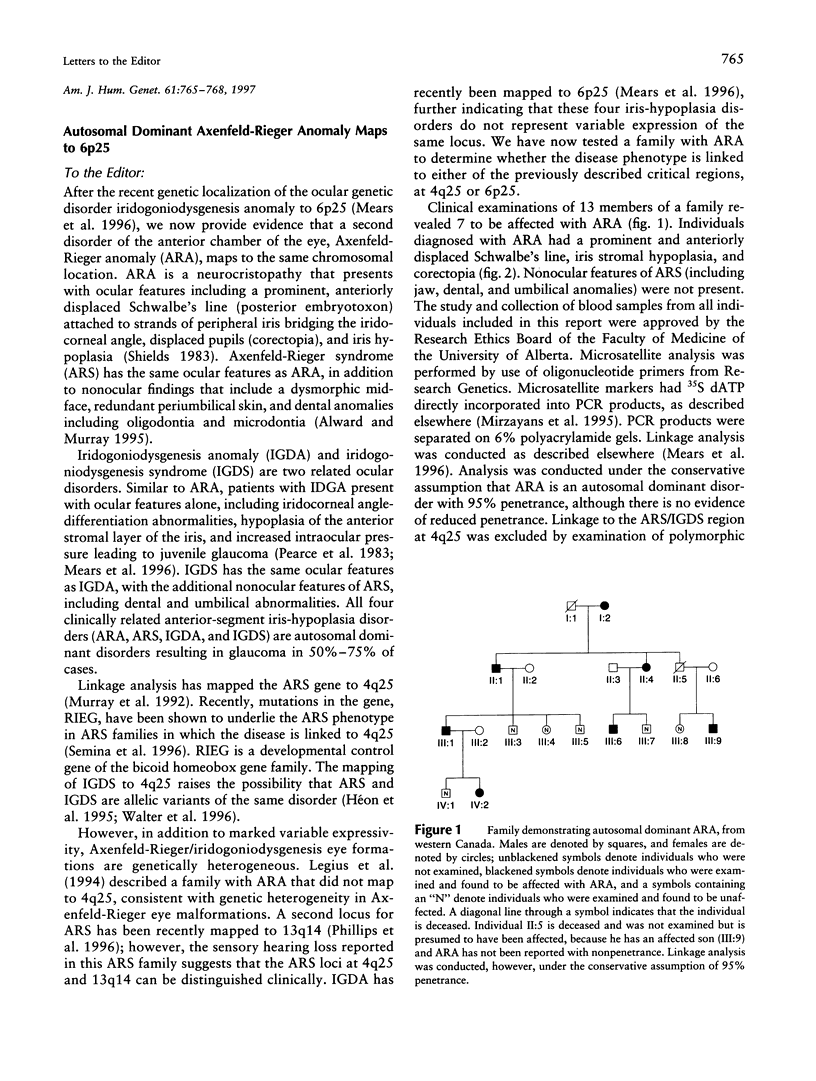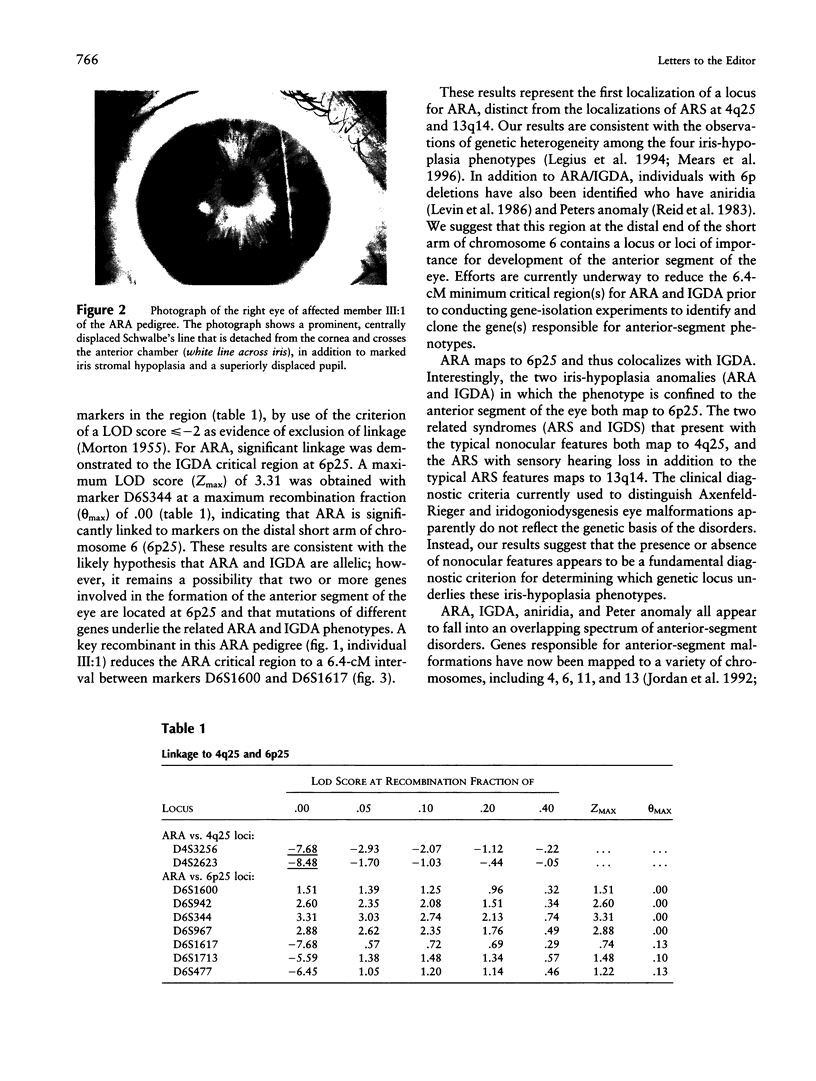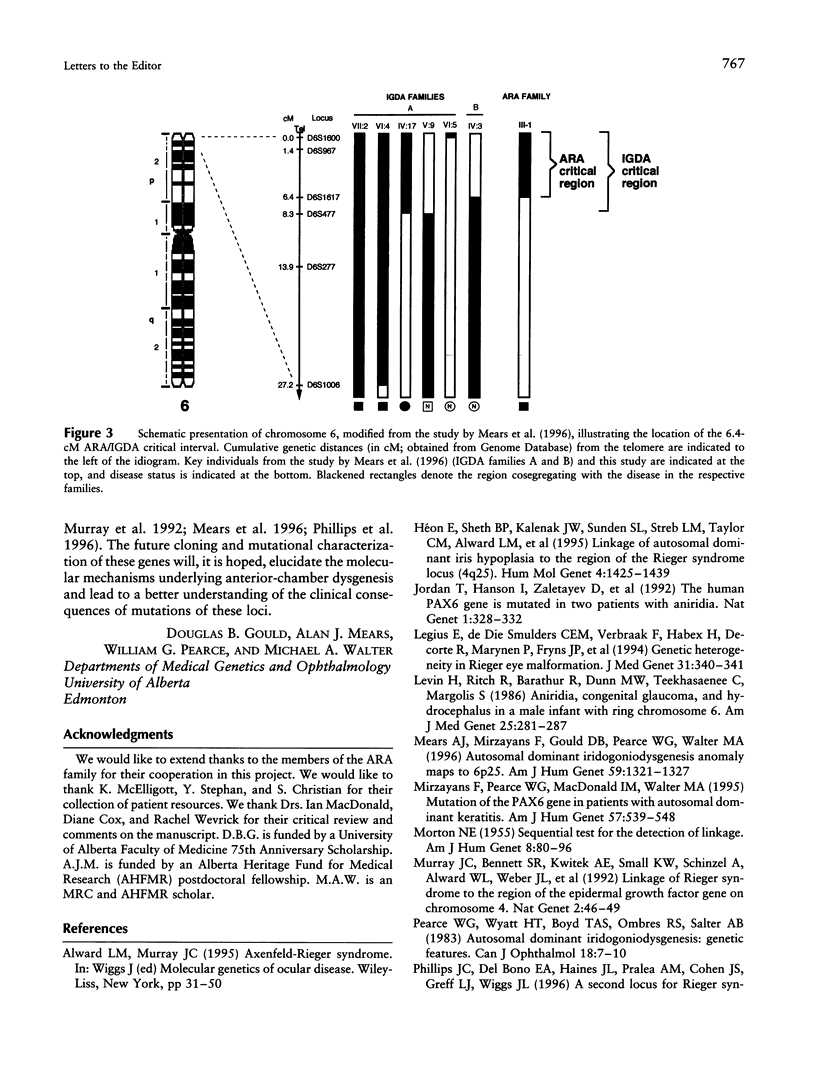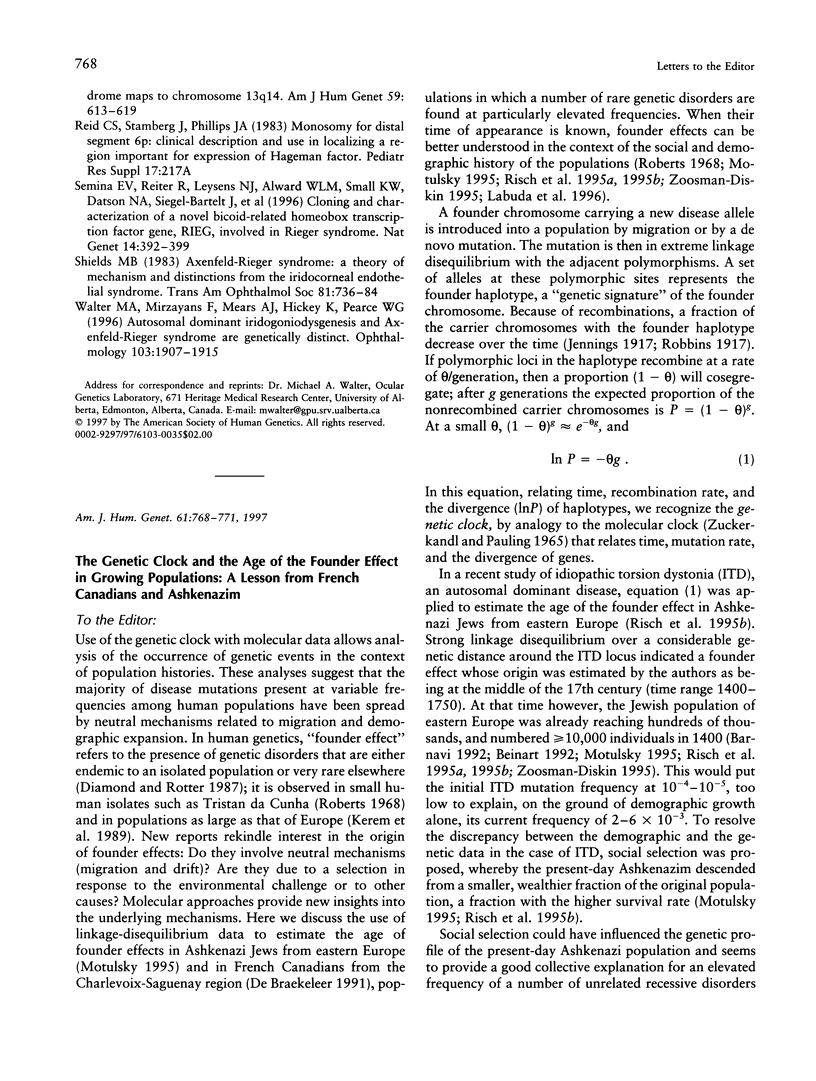Full text
PDF



Images in this article
Selected References
These references are in PubMed. This may not be the complete list of references from this article.
- Héon E., Sheth B. P., Kalenak J. W., Sunden S. L., Streb L. M., Taylor C. M., Alward W. L., Sheffield V. C., Stone E. M. Linkage of autosomal dominant iris hypoplasia to the region of the Rieger syndrome locus (4q25). Hum Mol Genet. 1995 Aug;4(8):1435–1439. doi: 10.1093/hmg/4.8.1435. [DOI] [PubMed] [Google Scholar]
- Jordan T., Hanson I., Zaletayev D., Hodgson S., Prosser J., Seawright A., Hastie N., van Heyningen V. The human PAX6 gene is mutated in two patients with aniridia. Nat Genet. 1992 Aug;1(5):328–332. doi: 10.1038/ng0892-328. [DOI] [PubMed] [Google Scholar]
- Legius E., de Die-Smulders C. E., Verbraak F., Habex H., Decorte R., Marynen P., Fryns J. P., Cassiman J. J. Genetic heterogeneity in Rieger eye malformation. J Med Genet. 1994 Apr;31(4):340–341. doi: 10.1136/jmg.31.4.340. [DOI] [PMC free article] [PubMed] [Google Scholar]
- Levin H., Ritch R., Barathur R., Dunn M. W., Teekhasaenee C., Margolis S. Aniridia, congenital glaucoma, and hydrocephalus in a male infant with ring chromosome 6. Am J Med Genet. 1986 Oct;25(2):281–287. doi: 10.1002/ajmg.1320250212. [DOI] [PubMed] [Google Scholar]
- MORTON N. E. The detection and estimation of linkage between the genes for elliptocytosis and the Rh blood type. Am J Hum Genet. 1956 Jun;8(2):80–96. [PMC free article] [PubMed] [Google Scholar]
- Mears A. J., Mirzayans F., Gould D. B., Pearce W. G., Walter M. A. Autosomal dominant iridogoniodysgenesis anomaly maps to 6p25. Am J Hum Genet. 1996 Dec;59(6):1321–1327. [PMC free article] [PubMed] [Google Scholar]
- Mirzayans F., Pearce W. G., MacDonald I. M., Walter M. A. Mutation of the PAX6 gene in patients with autosomal dominant keratitis. Am J Hum Genet. 1995 Sep;57(3):539–548. [PMC free article] [PubMed] [Google Scholar]
- Murray J. C., Bennett S. R., Kwitek A. E., Small K. W., Schinzel A., Alward W. L., Weber J. L., Bell G. I., Buetow K. H. Linkage of Rieger syndrome to the region of the epidermal growth factor gene on chromosome 4. Nat Genet. 1992 Sep;2(1):46–49. doi: 10.1038/ng0992-46. [DOI] [PubMed] [Google Scholar]
- Pearce W. G., Wyatt H. T., Boyd T. A., Ombres R. S., Salter A. B. Autosomal dominant iridogoniodysgenesis: genetic features. Can J Ophthalmol. 1983 Feb;18(1):7–10. [PubMed] [Google Scholar]
- Phillips J. C., del Bono E. A., Haines J. L., Pralea A. M., Cohen J. S., Greff L. J., Wiggs J. L. A second locus for Rieger syndrome maps to chromosome 13q14. Am J Hum Genet. 1996 Sep;59(3):613–619. [PMC free article] [PubMed] [Google Scholar]
- Semina E. V., Reiter R., Leysens N. J., Alward W. L., Small K. W., Datson N. A., Siegel-Bartelt J., Bierke-Nelson D., Bitoun P., Zabel B. U. Cloning and characterization of a novel bicoid-related homeobox transcription factor gene, RIEG, involved in Rieger syndrome. Nat Genet. 1996 Dec;14(4):392–399. doi: 10.1038/ng1296-392. [DOI] [PubMed] [Google Scholar]
- Shields M. B. Axenfeld-Rieger syndrome: a theory of mechanism and distinctions from the iridocorneal endothelial syndrome. Trans Am Ophthalmol Soc. 1983;81:736–784. [PMC free article] [PubMed] [Google Scholar]
- Walter M. A., Mirzayans F., Mears A. J., Hickey K., Pearce W. G. Autosomal-dominant iridogoniodysgenesis and Axenfeld-Rieger syndrome are genetically distinct. Ophthalmology. 1996 Nov;103(11):1907–1915. doi: 10.1016/s0161-6420(96)30408-9. [DOI] [PubMed] [Google Scholar]



